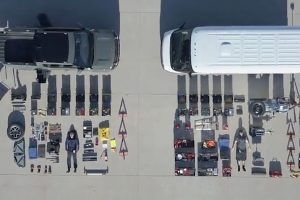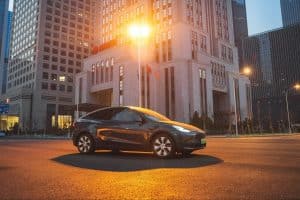- 🚗 Tesla Model X testing mule was spotted in Northern California with a LiDAR rig ahead of the Robotaxi event.
- 🔍 Despite historically not using LiDAR, Tesla is possibly employing it for data collection or vision validation.
- 👤 Elon Musk has criticized LiDAR as unnecessary for Tesla’s Full Self-Driving capabilities.
- 🆒 The LiDAR equipment on the Tesla vehicles is identified as the Luminar Hydra.
- 📆 Tesla is planning to unveil its Robotaxi on October 10, after a delay from the initial August 8 date.
- 🚥 Earlier test vehicles for the Robotaxi event did not include LiDAR.
The automotive world is constantly buzzing with innovation, and Tesla, being a front-runner, consistently churns out advancements that spark conversations worldwide. Recently, a Tesla Model X testing mule outfitted with a LiDAR rig was spotted in Northern California, causing a stir in the tech and automotive communities. What makes this particularly interesting is Tesla’s historical stance against the use of LiDAR technology for its Full Self-Driving suite, promoted extensively by CEO Elon Musk himself. This blog post dives deep into this development and scrutinizes its implications for Tesla and the landscape of autonomous driving.
The Historical Context: Tesla’s Vision-Based Approach
Since its inception, Tesla has distinguished itself by its unconventional and bold approaches to automotive technology. One of the company’s most debated approaches is its reliance on a vision-based strategy for full self-driving capabilities — a move that excludes the use of LiDAR. Instead, Tesla has invested heavily in enhancing optical cameras and artificial intelligence to achieve a comprehensive understanding of the driving environment.
- Vision vs. LiDAR:
- Vision Systems: Rely on visual data captured through cameras, requiring advanced AI algorithms to interpret scenes akin to human sight.
- LiDAR Technology: Utilizes laser reflections to generate precise 3D maps of the vehicle’s surroundings, often seen as a more reliable albeit expensive method.
In past statements, Elon Musk has strongly advocated for the capability of vision systems to suffice, labeling LiDAR as a “fool’s errand.”
The Emergence of LiDAR in Tesla’s Testing
Despite Tesla’s prior dismissal of LiDAR, the presence of a LiDAR rig on their Model X test vehicles indicates a possible recalibration or strategic exploration. The fact that such equipment wasn’t evident on previous prototypes for the Robotaxi event raises several considerations:
- Data Collection & Validation: One plausible explanation is that Tesla is capitalizing on LiDAR to gather supplemental data, potentially for validation purposes against their current systems.
- The Luminar Hydra: Identified as the technology in use, the Luminar Hydra is reputed for its advanced capabilities in providing detailed environmental data, aiding in the refinement of autopilot systems.
Implications for the Robotaxi Event
Tesla’s forthcoming Robotaxi event, now slated for October 10 after a delay from the original August 8 date, will likely be a platform where these strategic decisions become clearer. The event is significant for several reasons:
- Introduction of New Technologies: Enthusiasts and analysts are eager to see whether Tesla will officially endorse the use of LiDAR as part of their autonomous vehicle strategy moving forward.
- Potential Design Revisions: Given the delay attributed to design changes, it suggests that Tesla is refining various components not only for aesthetic purposes but for functional enhancements as well.
Potential Reasons for the Tactical Shift
- Market Competition: With numerous companies adopting LiDAR for their autonomous vehicles, Tesla might reassess its technology stack to remain competitive.
- Regulatory Pressures: As regulatory environments tighten around the deployment of autonomous vehicles, additional data collection methods might be necessary to meet stringent safety standards.
- Technological Synergy: Exploring the integration of LiDAR with existing vision systems could yield a more robust solution, leveraging the strengths of both methodologies.
Conclusion: A Future of Hybrid Solutions?
Tesla’s flirtation with LiDAR underscores not only a potential pivot or expansion in their technological approach but also signifies a broader trend toward hybrid systems that exploit multiple data sources for enhanced vehicle autonomy. As this development unfolds, the industry and public alike will watch closely to see how Tesla balances its legacy of vision-based systems with new experimental tools. The Robotaxi event promises to shed light on these questions and might well set the course for the next phase in autonomous driving innovation.





